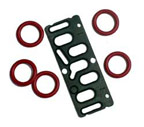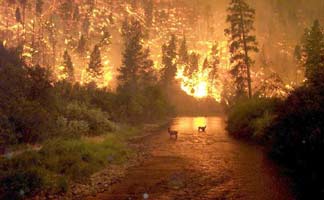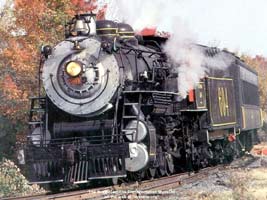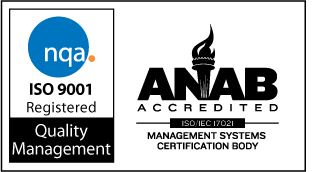
|
7108
S. Alton Way, Unit I |
(303) 758-2728
Home > Problems Solved > Mixed Up mm's
The Case of the Mixed Up Millimeters


This
is about a hydraulic cylinder made in a country famous for its drinking.
That may be what caused the cylinder design problem. Actually there
were four cylinders being used by a railroad, two per unit, as positioning
devices for a welder which tracked around the countryside joining rails
as they were laid. The rod end of the cylinders faced down, oil leaked
out and down the rods to the welder and started fires. The railroad
said they kept on setting fires to West Texas. You may not think that's
all bad, but the railroad didn't like the resulting community complaints.
The problem was that the rod seal was a u-ring. U-rings seal best when fully pressurized and that wasn't happening during most of the cyle. The real problem was the dimensions. The rod was an standard 75mm but the counterbore (seal OD) was 107mm! How they came up with that combination no one knows but you ended up with a very unusual u-ring with a 16mm cross section. The seals suppled by the cylinder manufacturer leaked. The railroad had already paid several thousand dollars for a new mold from a company offering a urethane u-ring, It also leaked, which is no surprise. Urethane has excellent wear and extrusion resistance, neither of which was the problem.

 We
could have designed a u-ring with special spring loading which probably
would have worked. But it would require more tooling costs before we
would know for sure. Since the railroad had an excellent machine shop
we decided to change the cylinder rather than the seal. We had them
make up some sleeves 90mm x 107mm which they then press fit into the
counterbore. That changed the seal space to 75mm x 90mm, so you had
standard diameters and a common 7.5mm cross section. And, to play safe,
we went with a set of stacked v-packing. This way you got multiple sealing
lips under axial compression resulting in good lip interference, and
sealing which did not require fluid pressure.
We
could have designed a u-ring with special spring loading which probably
would have worked. But it would require more tooling costs before we
would know for sure. Since the railroad had an excellent machine shop
we decided to change the cylinder rather than the seal. We had them
make up some sleeves 90mm x 107mm which they then press fit into the
counterbore. That changed the seal space to 75mm x 90mm, so you had
standard diameters and a common 7.5mm cross section. And, to play safe,
we went with a set of stacked v-packing. This way you got multiple sealing
lips under axial compression resulting in good lip interference, and
sealing which did not require fluid pressure.
Next step was to get metric v-sets 75mm x 90mm. Once we had them we could take an accurate measurement of their height. From that we did a "confined controlled stack height" calculation to determine the gland depth where they would be installed. Lips seals grow axially when installed and stacked lips seals grow a lot! They also need some compression after installation. So we calculated growth and then calculated some compression. All this was necessary since there would be no adjustable follower for the vset. Then the machine shop made a follower plate that would achieve the resulting gland depth.
Everything worked fine. No leaks, no fires, West Texas saved.
Conclusion: There's more to solving sealing problems than just finding the right seal. (And it helps to have a customer willing to go along with the proposed solution).
Next Topic: The Case of the Oversize O-ring Groove
Photo Credits: Forest Fire by John McColgan, BLM, Alaska Fire Service and Train by The North Carolina Transportation Museum
We are located in the Denver Technological
Center in a suburb of Denver, Colorado
©1997-2017, Problem Solving Products, Inc.
Website Map | Privacy Statement
| Terms of Use

